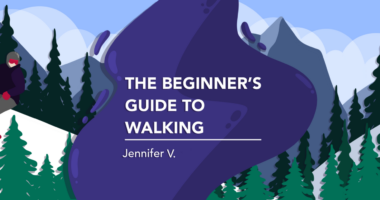How the NMO community showed me the power of rare
My daughter's NMO diagnosis brought loneliness, then connection

Since 2008, the global rare disease community has observed Rare Disease Day every year on the last day of February. Currently, there are more than 7,000 known rare diseases affecting up to 30 million, or 1 in 10, Americans.
In 2017, my youngest daughter, Bella, was diagnosed with a rare autoimmune disease called neuromyelitis optica (NMO). In the years since Bella was diagnosed, I’ve had moments when I felt lonely, as though my daughter were the only person in the world with NMO. But I’ve also had the great privilege of meeting others who are bravely fighting the disease. Through them, I’ve learned about the power of rare.
According to the Cleveland Clinic, there are between 1,000 and 14,600 cases of NMO in the U.S. and up to 350,600 cases worldwide. Only 5% of people with NMO are children like Bella.
Symptoms of NMO vary between patients, but they may include blindness in one or both eyes, uncontrollable vomiting, hiccups, and weakness in the legs and arms. Bella’s NMO journey began with nausea, vomiting, and hiccups, which can often be signs of NMO affecting the brainstem. After just a few days in the hospital, Bella’s symptoms quickly escalated to include confusion, paralysis, and trouble breathing and swallowing. At one point, while undergoing an MRI of her brain, Bella’s heart stopped beating.
She spent six weeks in the hospital after that first NMO attack. The first three weeks were spent in the intensive care unit, and the next three in rehab as Bella regained her strength and relearned how to walk and swallow.
Loneliness
I’ve never felt more rare and alone than when we received Bella’s NMO diagnosis. I remember the moment as if it were yesterday. At the time, Bella was gravely ill and in a medically induced coma to give her body a rest. Bella’s team of doctors approached me as I was sitting beside her and wrote the words “neuromyelitis optica” on the window of her room.
The doctors explained that the blood tests they’d sent to the Mayo Clinic came back positive for antibodies to the water channel protein aquaporin-4 — something that’s present in the majority of NMO patients. The reassurance of having a diagnosis was short-lived, as I was soon told there’s no cure. I felt even lonelier upon learning that, at the time of Bella’s diagnosis, she was the youngest person with NMO here in Colorado.
In the days that followed, I researched the illness online. I had so many questions, but no one at the hospital was answering them in a way I could easily understand. I wanted to learn all I could about NMO so that I could better support Bella in her recovery and be her best advocate throughout her journey.
But as Bella’s mom and caregiver, I knew I also needed to take care of myself and my mental health so that I could be at my best for my girl. Taking a break from online research, I turned to social media to look for support groups in the hopes of connecting with others living with NMO. I needed to know that there was a chance of Bella living a full, healthy life.
Connection
Social media led me to nonprofits like The Sumaira Foundation, and it was through the foundation that I was able to connect with a community of patients and caregivers on the same journey as Bella and me.
I received the reassurance and hope that I needed via a private message from the founder of The Sumaira Foundation, Sumaira Ahmed, who also has NMO. I learned that the foundation’s mission is to “illuminate the darkness of NMOSD/MOGAD,” and this moved me because I never wanted anyone else to feel as alone as I did after Bella’s diagnosis. I ended up becoming the foundation’s Colorado ambassador, and in May 2022, I became program manager for its Human Collective Project, which offers support group meetings.
Today, Bella is a happy, healthy, 14-year-old high school freshman who dreams of becoming an emergency medical technician so that she can help others. Since I became program manager, the Human Collective Project has launched support groups in Denmark, France, Amsterdam, Belgium, the U.K., South Africa, and Germany, and last month, we began a monthly global group.
While there is still much more research needed on NMO, I’m honored to be a small part of a powerful community of NMO warriors, illuminating the darkness of this rare disease.
Note: Neuromyelitis News is strictly a news and information website about the disease. It does not provide medical advice, diagnosis, or treatment. This content is not intended to be a substitute for professional medical advice, diagnosis, or treatment. Always seek the advice of your physician or other qualified health providers with any questions you may have regarding a medical condition. Never disregard professional medical advice or delay in seeking it because of something you have read on this website. The opinions expressed in this column are not those of Neuromyelitis News or its parent company, Bionews, and are intended to spark discussion about issues pertaining to neuromyelitis optica spectrum disorder (NMOSD).








Leave a comment
Fill in the required fields to post. Your email address will not be published.